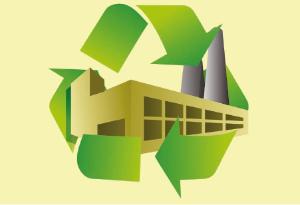Resource productivity and waste
Extended Producer Responsibility
OECD defines Extended Producer Responsibility (EPR) as an environmental policy approach in which a producer’s responsibility for a product is extended to the post-consumer stage of a product’s life cycle. An EPR policy is characterised by:
1. the shifting of responsibility (physically and/or economically; fully or partially) upstream toward the producer and away from municipalities; and
2. the provision of incentives to producers to take into account environmental considerations when designing their products.
While other policy instruments tend to target a single point in the chain, EPR seeks to integrate signals related to the environmental characteristics of products and production processes throughout the product chain.
Latest release
The Extended Producer Responsibility: Basic facts and key principles policy paper provides a concise introduction to Extended Producer Responsibility (EPR), its impact and potential applications, as well as identifying the available literature. It underscores common principles for policy design and implementation that have been linked with successful EPR schemes. Read the paper released in collaboration with the Global Action Partnership for EPR, Deutsche Gesellschaft für Internationale Zusammenarbeit, the Ellen MacArthur Foundation, the PREVENT Waste Alliance, the United Nations Environment Programme and the World Wide Fund for Nature.
environment working papers
- New Aspects of EPR: Extending producer responsibility to additional product groups and challenges throughout the product lifecycle | 2023
- Deposit-refund systems and the interplay with additional mandatory extended producer responsibility policies | 2022
- Modulated fees for Extended Producer Responsibility schemes (EPR) | 2021
- Extended Producer Responsibility and the Impact of Online Sales | 2019
MAIN REPORT AND HIGHLIGHTS
case studies
- Australia: The Australian National Television and Computer Recycling Scheme
- Canada: Promoting Sustainable Materials, Management Through Extended Producer Responsibility: Canadian Waste Electrical and Electronic Equipment (WEEE)
- Chile: What Have We Learned About Extended Producer Responsibility in the Past Decade?
- China: How Does the Chinese E-waste Disposal Fund Scheme Work?
- Colombia: EPR Schemes Including for WEEE in Colombia
- Belgium: Extended Producer Responsibility: The Case of Used Tyres in Flanders
- France: 20 Years of EPR in France: Achievements, Lessons Learned and Challenges Ahead
- Japan:
Packaging: The Packaging Recycling Act: The Application of EPR to Packaging Policies in Japan
Home Appliance: EPR-Based Electronic Home Appliance Recycling System under Home Appliance, Recycling Act of Japan
Batteries: The Recycling Scheme for Compact Rechargeable Batteries in Japan - Under the Act on the Promotion of Effective Utilization of Resource
- Korea: Case study for OECD Project on Extended Producer Responsibility, Republic of Korea
- Slovakia: Extended Producer Responsibility – Packaging and Packaging Waste in Slovakia
- United States: Electronics EPR: A Case Study of State Programs in the United States (Product Stewardship Institute)
Events
- OECD Workshop on Extended Producer Responsibility: New insights and the way forward, OECD Paris - Agenda (PDF) & Summary Report (PDF) | 2023
- Webinar with Product Stewardship Institute on Improving EPR Programs Worldwide – The New OECD Guidelines | 2016
- In country dialogues and workshops on Extended Producer Responsability (EPR), New Delhi, India | 2016
- OECD Global Forum on Environment: Promoting Sustainable Materials Management through Extended Producer Responsibility, Tokyo, Japan | 2014
background
Since 1994, OECD has published several reports, namely Extended Producer Responsibility: A Guidance Manual for Governments which provides information about issues and potential benefits and costs associated with EPR. Drawing on the experience of OECD countries, it provides a set of principles to guide policy makers as they make decisions about EPR policy and programmes. The Guidance Manual also identifies several policy instruments for implementing EPR: take-back, economic instruments e.g. advanced disposal fees, deposit-refund, a combined upstream tax/downstream subsidy and standards.
As EPR policies develop in OECD countries, a systematic economic analysis and assessment is required more than ever. To this end, the OECD organised a workshop in 2002 on Economic Aspects of Extended Producer Responsibility. Some important questions answered by the workshop concerned how to set economically sound objectives, devise cost effective EPR policy instruments and ensure that appropriate evaluation and feedback mechanisms are in place to verify.
To help governments make more informed decisions about EPR implementation and assess the social costs of such policy, an OECD report proposes a framework for analysing the costs and benefits of such programmes: Analytical Framework for Evaluating the Costs and Benefits of Extended Producer Responsibility Programmes.
By placing responsibility for a product’s end-of-life environmental impacts on producers, EPR policies are also expected to push them to redesign their products for environment. Such change, while reducing waste management costs, should as well reduce materials use and enhance product reusability and recyclability. The OECD report Extended Producer Responsibility Policies and Product Design: Economic Theory and Selected Case Studies, discusses the potential Design for Environment impacts of EPR policies and provides practical examples of the extent to which some EPR programmes are contributing to ‘Design for the Environment’.
further reading
Related Documents
